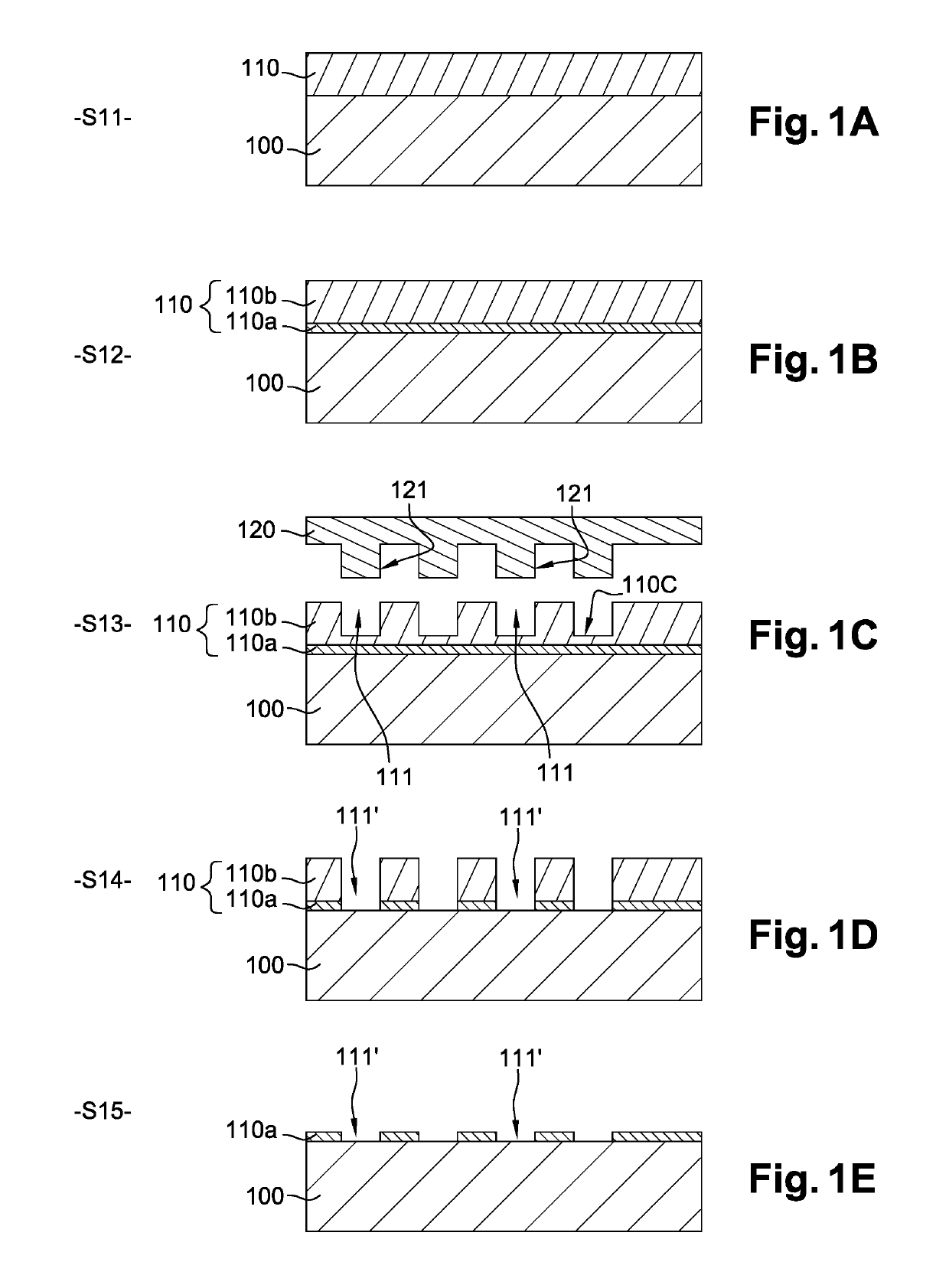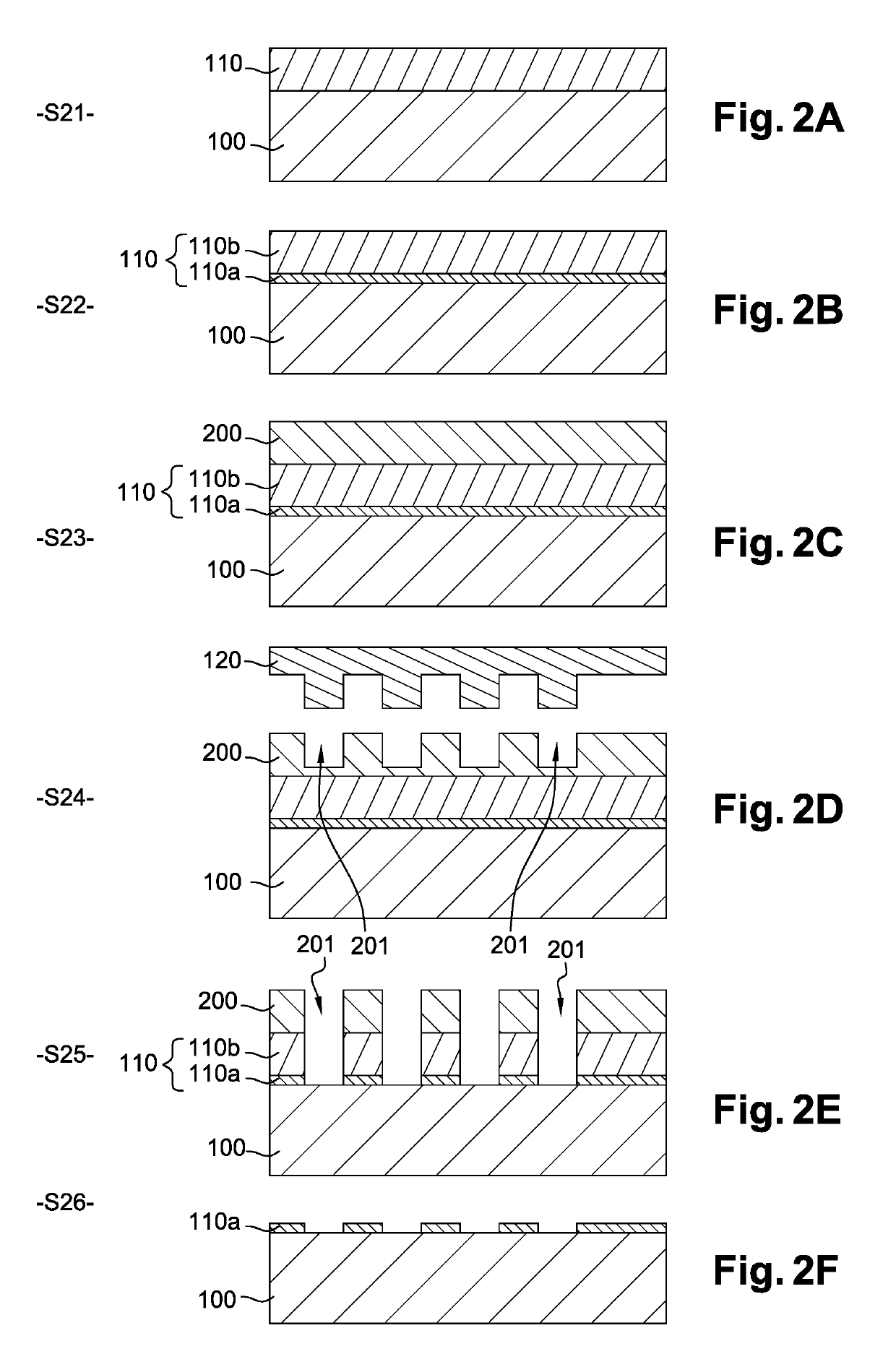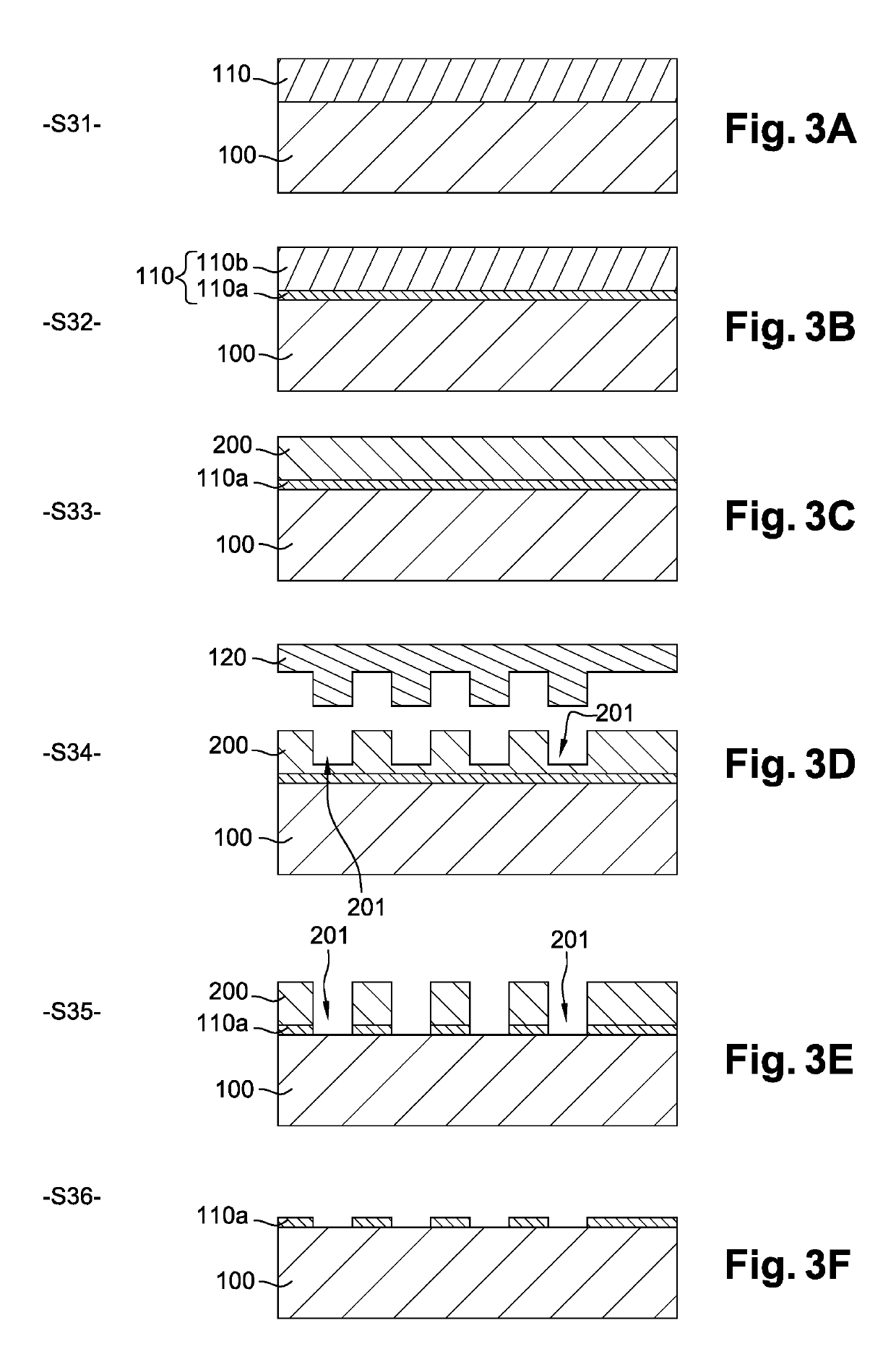Method for functionalising a substrate
a functionalisation and substrate technology, applied in the field of functionalisation of substrates, can solve problems such as uncontrollable modification of chemical affinity, and achieve the effect of good lithographic properties
- Summary
- Abstract
- Description
- Claims
- Application Information
AI Technical Summary
Benefits of technology
Problems solved by technology
Method used
Image
Examples
first embodiment
[0040]FIGS. 1A to 1E represent the steps S11 to S15 of a method for functionalising a substrate 100, according to the invention.
[0041]The first step S11, illustrated by FIG. 1A, consists in depositing on the surface of the substrate 100 a layer of a polymer material 110, called functionalisation polymer. This functionalisation polymer 110 is graftable and selected according to the chemical affinity that it is wished to give to certain areas of the substrate 100. Moreover, in this first embodiment, the functionalisation polymer 110 is printable, that is to say that it is capable of being patterned, or modelled, via a printing method.
[0042]The functionalisation polymer 110 is preferably a random copolymer, a homopolymer or any other type of graftable (and printable) polymer allowing the surface energy to be controlled (the surface energy determines the chemical affinity with respect to the blocks of the copolymer). The polymer layer 110 may also be formed of a Self-Assembled Monolayer...
second embodiment
[0056]FIGS. 2A to 2F represent the steps S21 to S26 of a functionalisation method according to the invention.
[0057]The two first steps S21 and S22, illustrated by FIGS. 2A and 2B respectively, are identical to the steps S11 and S12 described previously in relation with FIGS. 1A and 1B. Thus, a layer of a functionalisation polymer 110 is deposited on the substrate 100 during step S21, then a part 110a of this layer is grafted onto the substrate 100 during step S22. As previously, a non-grafted part 110b of the polymer layer 110 covers the grafted part 110a.
[0058]With reference to FIG. 2C, the functionalisation method next comprises a step S23 consisting in depositing a layer made of a printable polymer material 200 on the non-grafted part 110b of the polymer layer 110. This printable polymer 200 is distinct from the functionalisation polymer 110. The printable polymer 200 is preferably a thermoplastic resin, for example based on PS, PMMA or cyclic olefin copolymer (COC), a thermoset...
third embodiment
[0065]FIGS. 3A to 3F represent the successive steps S31 to S36 of a functionalisation method according to the invention.
[0066]This third embodiment differs from that of FIGS. 2A-2F in that the non-grafted part 110b of the polymer layer 110 is removed before the deposition of the layer of printable polymer 200, during a step S33 (FIG. 3C).
[0067]Thus, the protective (and sacrificial) layer that covers the grafted part 110a of the functionalisation polymer is only comprised of the layer of printable polymer 200. This thus avoids the superimposition of two polymer materials—the non-grafted functionalisation polymer and the printable polymer—and thus problems of compatibility that result from this superimposition.
[0068]In addition to the benefit provided by the printable material 200 (i.e. simplification of the printing step), this third embodiment offers the greatest freedom with regard to the choice of polymers. Indeed, the functionalisation polymer is, once grafted, chemically and the...
PUM
| Property | Measurement | Unit |
|---|---|---|
| thickness | aaaaa | aaaaa |
| thickness | aaaaa | aaaaa |
| thickness | aaaaa | aaaaa |
Abstract
Description
Claims
Application Information
 Login to View More
Login to View More - R&D
- Intellectual Property
- Life Sciences
- Materials
- Tech Scout
- Unparalleled Data Quality
- Higher Quality Content
- 60% Fewer Hallucinations
Browse by: Latest US Patents, China's latest patents, Technical Efficacy Thesaurus, Application Domain, Technology Topic, Popular Technical Reports.
© 2025 PatSnap. All rights reserved.Legal|Privacy policy|Modern Slavery Act Transparency Statement|Sitemap|About US| Contact US: help@patsnap.com



